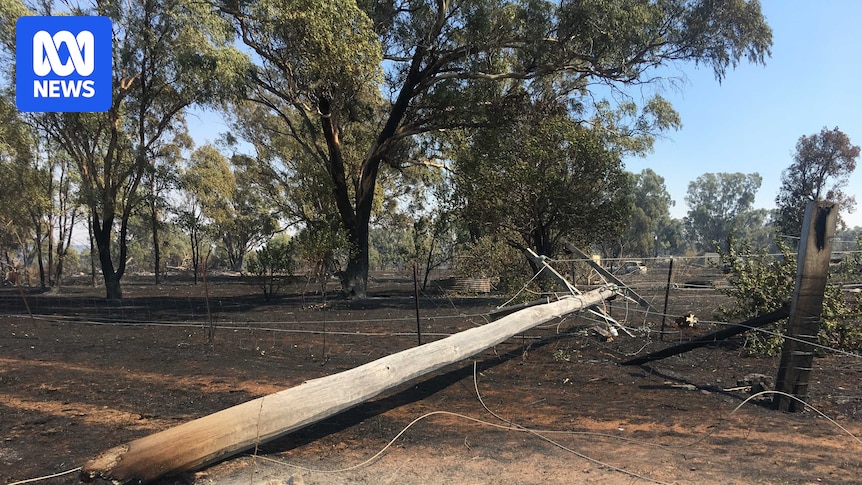
Australian researchers have developed a groundbreaking technology aimed at detecting potential power line faults before they can spark devastating bushfires. This innovation, known as Early Fault Detection (EFD), was created by researchers at RMIT University and has been trialled both in Australia and internationally. The initiative seeks to prevent tragedies like the Black Saturday bushfire, which remains one of the nation’s deadliest disasters.
IND Technology, the company responsible for commercializing EFD, is advocating for a national rollout. However, the implementation faces challenges, notably the substantial $380 million installation cost. As the next disaster season approaches, energy providers are carefully evaluating the technology’s benefits against its financial implications.
Understanding the Technology
On February 7, 2009, a catastrophic fire ignited in Kilmore East, approximately 65 kilometers north of Melbourne. The blaze was triggered by a faulty power line brought down by strong winds on an extremely hot day, eventually merging with another fire to devastate Victoria. The disaster claimed 173 lives and razed over 400,000 hectares of land, including homes and infrastructure. The incident was thoroughly investigated by a Royal Commission and became the subject of a $500 million class-action lawsuit.
Dr. Karl Marxsen, an electrical engineer with extensive experience in both the public and private sectors, played a pivotal role in developing EFD. He explained that the system operates independently of the power network, detecting faults by identifying specific radio frequencies emitted by issues such as broken wires or vegetation interference.
“It finds problems, locates them, and allows the network owner to go directly to the site and fix the problem before it develops into a full-scale network fault,” Dr. Marxsen stated.
The technology boasts impressive precision, detecting faults within a 10-meter range. By triangulating radio frequency signals from multiple locations, EFD can pinpoint the exact location of a problem, enabling preemptive repairs to prevent potential fires.
Trial Results and Adoption
While fallen power lines are not the leading cause of bushfires in Australia, they are a significant ignition source. EFD technology is specifically designed for single wire earth return (SWER) powerlines, commonly used in rural and remote areas like Kilmore East. Following the Black Saturday disaster, the Bushfires Royal Commission recommended replacing Victoria’s 28,000 kilometers of SWER lines.
Powercor, responsible for 21,000 kilometers of these lines, has integrated EFD among other protective technologies. According to spokesman Jordan Oliver, SWER lines comprise about a third of Powercor’s network. Other electricity providers, including Ausgrid, the largest distributor on the east coast, have also trialled or plan to trial the technology.
In Queensland, where SWER powerlines span approximately 65,000 kilometers, the state-owned electricity company opted against a full rollout, citing cost concerns despite the technology’s effectiveness. In New South Wales, Endeavour Energy was the first of three distributors to trial EFD in 2020, with promising results in identifying hard-to-reach deterioration.
“It’s more difficult if we’re purely relying on visual inspection techniques. We may not be able to find some of those issues,” noted Edmund Li, Head of Asset Management at Endeavour Energy.
Funding and Future Prospects
Energy distributors typically submit proposals to the Australian Energy Regulator every five years, detailing their plans for network operation, maintenance, and funding. Endeavour Energy’s latest proposal includes funding for EFD devices across 1,000 kilometers of its network. Similarly, Victoria’s Ausnet has installed 310 EFD devices and earmarked $20 million for a broader rollout, while Powercor’s submission includes $13 million for SWER network safety improvements.
Despite the high costs, there is a strong push for national adoption. Dr. Marxsen estimates a full rollout would cost around $380 million. Meanwhile, the technology has gained international traction, with 98% of production exported to North America, and installations beginning in Asia and Europe.
“About 98 per cent of our production goes to North America, the US and Canada, but we are starting now we have installations in Asia and Europe,” Dr. Marxsen said.
As Australia braces for future bushfire seasons, the debate over the financial and safety benefits of EFD continues. The technology’s potential to prevent disasters like Black Saturday offers a compelling case for investment, yet the path forward requires careful consideration of costs and logistics.







